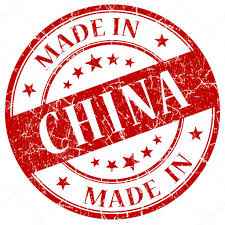Delhi : The fluorescent lights of the department store buzzed overhead as Maya stood in the aisle, holding a sleek, budget-friendly blender. She turned it over, scanning the label: “Made in China.” Her heart sank. She’d been here before—faced with the choice between convenience, affordability, and her growing unease about the ethical implications of her purchases. For weeks, Maya had been researching ethical alternatives to Chinese goods, driven by concerns about labor conditions, environmental impact, and geopolitical tensions. This blender, like so many other products lining the shelves, posed a dilemma: was there a better way to shop without compromising her values?
Maya’s journey began a month ago, sparked by a conversation with her friend Priya, a sustainability advocate who’d been boycotting Chinese-made products for years. “It’s not just about politics,” Priya had said over coffee, her voice earnest. “It’s about human rights, environmental degradation, and supporting systems that align with fairness.” Maya, a 32-year-old graphic designer from Seattle, had nodded, but the complexity of the issue left her head spinning. China’s dominance in global manufacturing—producing 20 to 30 percent of the world’s goods—made avoiding its products feel like an impossible task. Yet, Priya’s words stuck with her, and Maya decided to dig deeper.
Her research led her to a web of interconnected issues. Reports of forced labor in regions like Xinjiang, coupled with lax environmental regulations, raised red flags. A 2021 article from The Good Trade challenged the stigma around “Made in China,” arguing that ethical production depends on how goods are made, not just where. But Maya also found stories of sweatshops, child labor, and intellectual property theft, like the case of a U.S. company whose designs were replicated by a Chinese16 Chinese firm just miles from their factory. The more she read, the more she felt compelled to act. “I can’t keep buying into this system,” she told herself. “But what’s the alternative?”
Maya’s first stop was the internet, where she scoured forums and articles for guidance. A Reddit thread from 2021 posed the question: “Is it unethical to buy products made in China?” The responses were mixed. Some argued that boycotting Chinese goods wouldn’t solve labor issues and could harm workers reliant on those jobs. Others, like activist Sonam Wangchuk in a 2020 Outlook India interview, called for boycotts to pressure the Chinese regime on human rights and environmental violations. Maya leaned toward the latter view but recognized the challenge: China’s supply chains were so entrenched that even non-Chinese products often relied on Chinese components. A LiveMint article from 2025 highlighted how U.S. shoemaker New Balance struggled to diversify away from China despite 190% tariffs, underscoring the difficulty of escaping this reliance.
Determined to try, Maya started small. She visited a local boutique that boasted “ethically sourced” clothing. The owner, a cheerful woman named Lila, explained that her suppliers in Vietnam and India adhered to fair labor practices. “Look for certifications like SA8000 or WRAP,” Lila advised, echoing advice Maya had read on Epic Sourcing. These standards ensured fair wages and safe working conditions. Maya bought a handwoven scarf from a women’s cooperative in India, feeling a spark of satisfaction. The $45 price tag stung compared to the $15 equivalent at a big-box store, but she reminded herself that ethical choices often came at a premium. A 2017 Fast Company article had noted that consumers were willing to pay 10-15% more for ethically made goods, and Maya was starting to understand why.
Her next challenge was electronics. China’s grip on tech manufacturing was ironclad—Huawei, Lenovo, and countless others dominated the market. Maya found a website, ChinaNever, listing products made in the USA, Canada, and Europe. She ordered a laptop from a Canadian company that sourced components from Taiwan and South Korea, both of which had stronger labor protections than China. The process wasn’t seamless; shipping took weeks, and the cost was 20% higher than a comparable Chinese-made model. But Maya felt a sense of control, knowing her purchase supported better practices.
Groceries proved trickier. A People for Ethical Living article revealed that many imported fruits and vegetables from China carried illegal pesticide residues due to lax regulations. Maya switched to local farmers’ markets, where she could ask vendors directly about their practices. One Saturday, she met Javier, a farmer who grew organic apples in Washington state. “It’s not just about avoiding China,” he told her. “It’s about knowing your food’s story.” His apples cost twice as much as the supermarket’s, but their crisp flavor and Javier’s pride in his work made it worthwhile. Plus, she was supporting her local economy—a point driven home by a study cited in the article, which found that redirecting just $100 per household to local businesses could generate $10 million in economic impact.
Maya’s biggest hurdle was household goods. From blenders to furniture, China’s low costs and vast supply chains made alternatives hard to find. A Cosmo Sourcing guide from 2025 listed Vietnam, India, and Thailand as emerging manufacturing hubs with lower labor costs and fewer tariffs. Maya contacted a sourcing agent recommended by Epic Sourcing to find a Vietnamese factory with GOTS certification for organic textiles. The agent connected her with a family-owned business that paid living wages and used eco-friendly dyes. She ordered a set of bamboo bedsheets, which arrived after a month-long wait. They were soft, sustainably made, and—most importantly—aligned with her values.
Not every attempt succeeded. Maya tried sourcing a phone from South Korea, known for high-tech manufacturing, but found that even Samsung and LG relied on Chinese components. A Business Standard case study on Walmart’s sourcing dilemmas echoed her frustration: global supply chains were so intertwined with China that total avoidance was nearly impossible. “It’s like trying to untangle a spiderweb,” Maya muttered, tossing her old phone back onto the table. She settled for a refurbished model from a U.S. company, accepting that partial progress was better than none.
The deeper Maya dove, the more she realized ethical consumption wasn’t just about boycotting China—it was about transparency and accountability. A 2022 Harvard Business Review article outlined strategies for companies navigating China’s ethical risks: increased due diligence, transparency about operations, and exploring alternatives. Maya applied this to her own life, researching brands’ supply chains and asking pointed questions. She emailed one company about their labor practices and was impressed when they detailed their factory audits and Blue Sign certifications. Another brand’s vague response prompted her to look elsewhere.
Her journey wasn’t without skepticism. A Quora post from 2023 questioned whether boycotts hurt Chinese workers more than they helped, citing China’s poverty reduction from 88% in 1981 to 7.8% today. Maya wrestled with this. Was she inadvertently harming the very people she wanted to support? Yet, she reasoned, supporting ethical manufacturers in places like Vietnam or the Philippines could shift demand toward fairer systems. A Locad article from 2025 noted that countries like the Philippines were becoming viable alternatives, exporting $12.9 billion in electronics to the U.S. in 2023. By choosing these options, Maya hoped to drive systemic change.
As weeks passed, Maya’s home began to reflect her values. Her kitchen held ceramic mugs from a local potter, her closet boasted shirts from a WRAP-certified Indian factory, and her bookshelf displayed novels printed in Europe. Each purchase was a small rebellion against the “Made in China” default, but it came with trade-offs. Her budget strained under higher costs, and sourcing took time—sometimes weeks of research for a single item. Still, she felt empowered. “Every dollar is a vote,” she told Priya during a follow-up coffee date. “I’m voting for a world I believe in.”
Maya’s story isn’t unique. Across the globe, consumers are grappling with the same questions, fueled by a growing awareness of ethical consumption. A 2017 Unilever study found that 33% of consumers preferred brands with social or environmental commitments. For Maya, the journey was less about perfection and more about progress. She hadn’t fully escaped China’s manufacturing web—no one could—but she’d carved out a path that felt authentic. As she blended a smoothie with her new, ethically sourced blender from Thailand, she smiled. It wasn’t just about the smoothie. It was about knowing she’d made a choice that mattered.
Sources: People for Ethical Living, Cosmo Sourcing (2025), Locad (2025), LiveMint (2025), ChinaNever (2023), Epic Sourcing, Harvard Business Review (2022), The Good Trade (2021), Reddit (2021), Outlook India (2020), Business Standard (2018), Fast Company (2017), Quora (2023), Unilever (2017).





